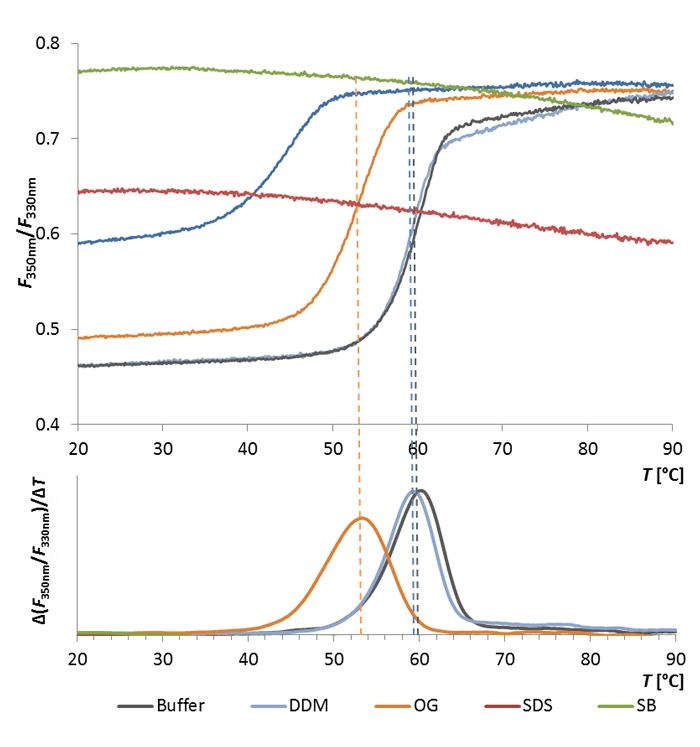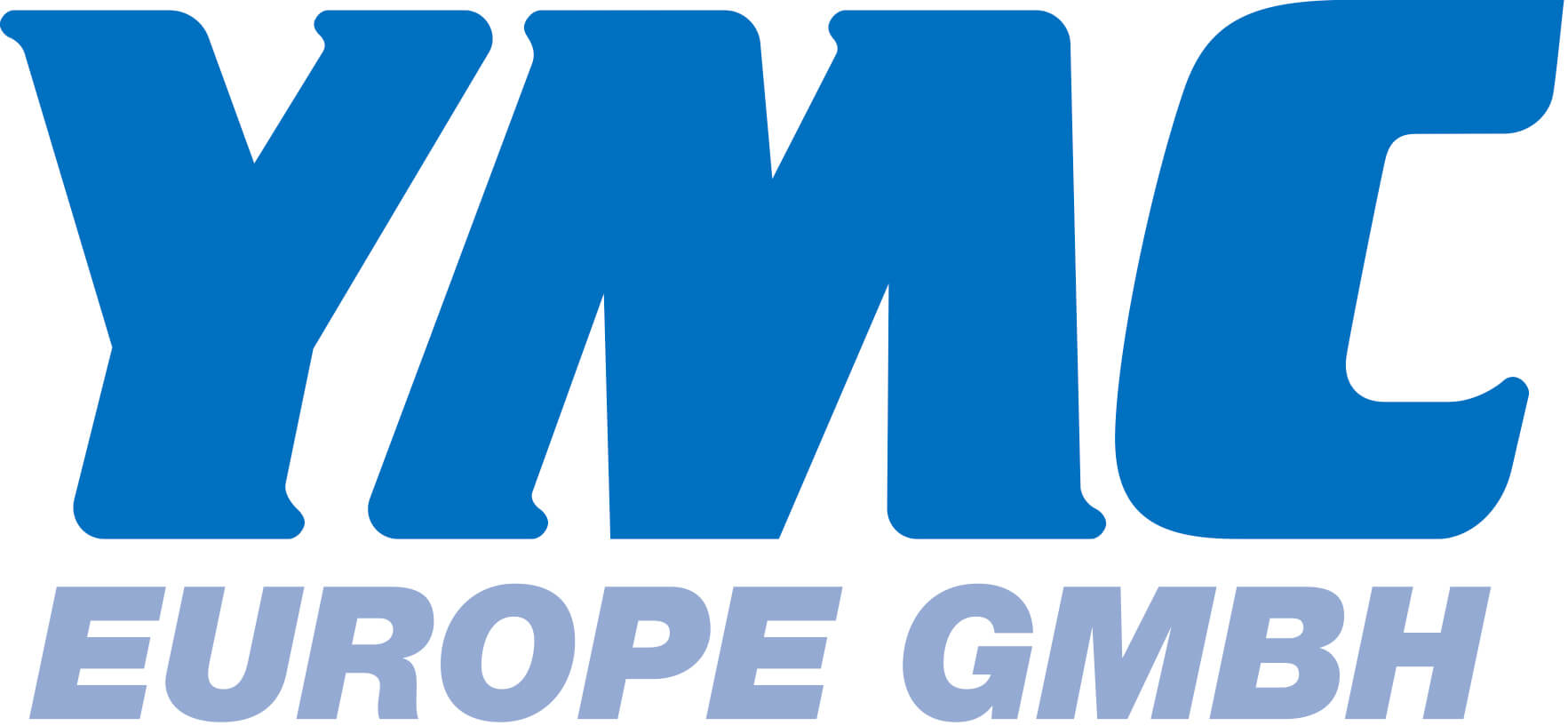Abstract
Membrane proteins have important applications in pharmaceuticals and biotechnology, but this class of proteins is inherently difficult to analyze. nanoDSF is not limited by buffer and detergent composition, making it the ideal platform for evaluating the stability, and hence, the functionality of membrane proteins.

Introduction
nanoDSF is an advanced differential scanning fluorimetry technology that has revolutionized how scientists measure protein thermostability. The basic principal behind this protocol is based on following changes in intrinsic tryptophan fluorescence, allowing dye-free assessment of melting temperature (Tm). nanoDSF has been successfully used in applications involving detergent-solubilized membrane proteins, which are inherently difficult to analyze with other techniques. Hydrophobic detergent micelles are not amenable to unfolding-reporting dyes (e.g., SYPRO Orange) that accompany the Thermofluor technique. Alternatively, differential scanning calorimetry (DSC) has limited applications with respect to membrane proteins due to detergent sensitivity. As a result, laboratories performing routine detergent screening to identify optimal purification/storage conditions for membrane proteins resort to trial-and-error, which is time-consuming, unproductive and expensive. In this comparative study, NanoTemper Technologies’ Prometheus NT.48 was used to determine the thermal stability of a membrane esterase PA2949 from Pseudomonas aeruginosa in the presence of various detergents. The data showed that the detergent type strongly affected enzyme thermal stability, which also correlated with enzyme activity. nanoDSF identified DDM as the best-suited detergent for PA2949 stabilization. By contrast, SDS and SB3-16 completely denatured PA2949, in agreement with a complete loss of enzyme activity. Our results show that Prometheus NT.48 can successfully measure the fluorescence emission changes of membrane proteins in the presence of detergent micelles. Thus, Prometheus NT.48 can be used to rapidly screen purification conditions for enzymes, and also to evaluate enzyme activities based on their conformational stability in presence of detergents. These results demonstrate the potential of Prometheus NT.48 for determining detergent-protein compatibility, which is particularly interesting for proteins that cannot be assayed enzymatically.

More information
Contact Information
Heide Marie Resch
Phone: +49 89 45 22 895 25
Email: info@nanotemper.de





